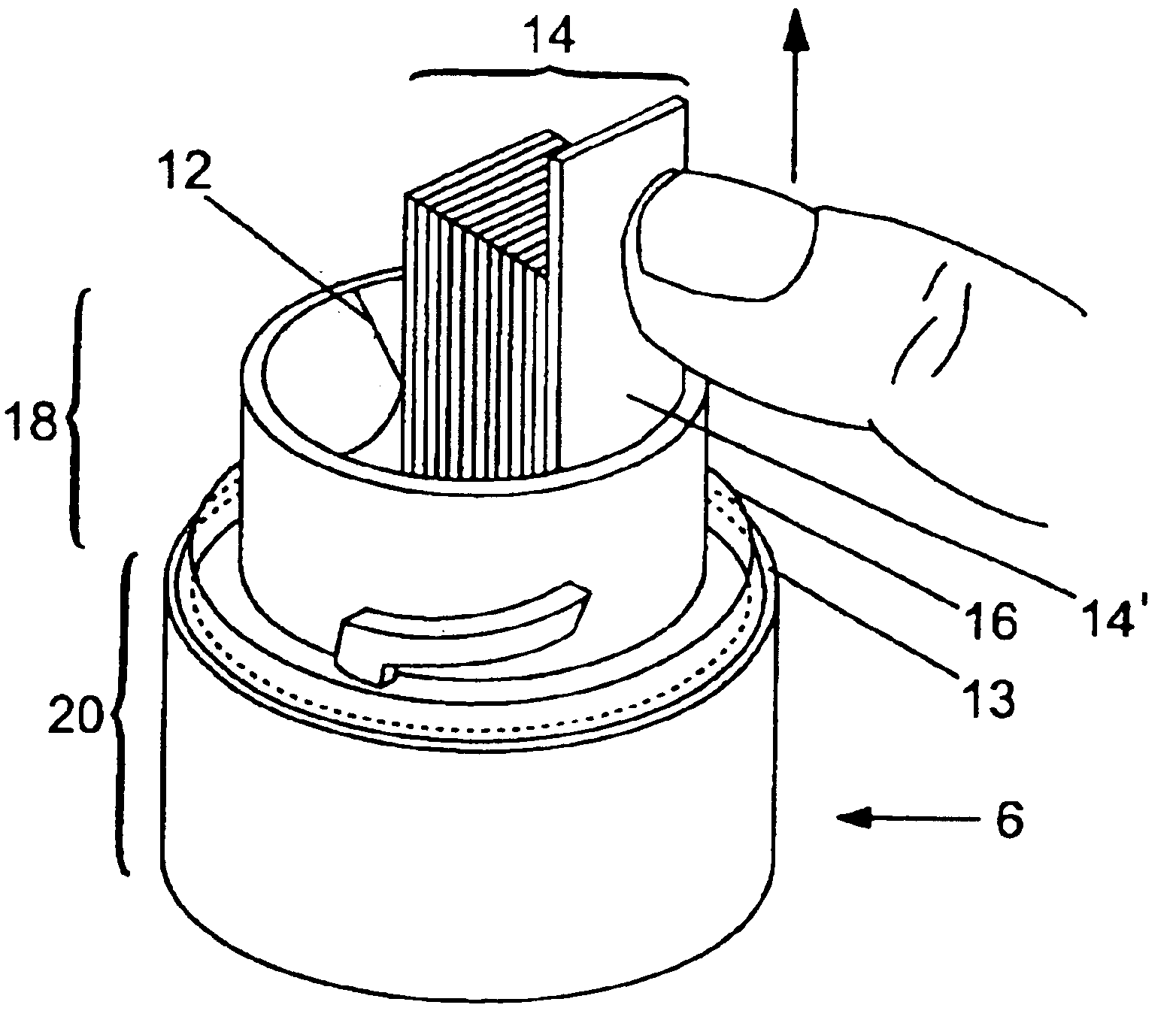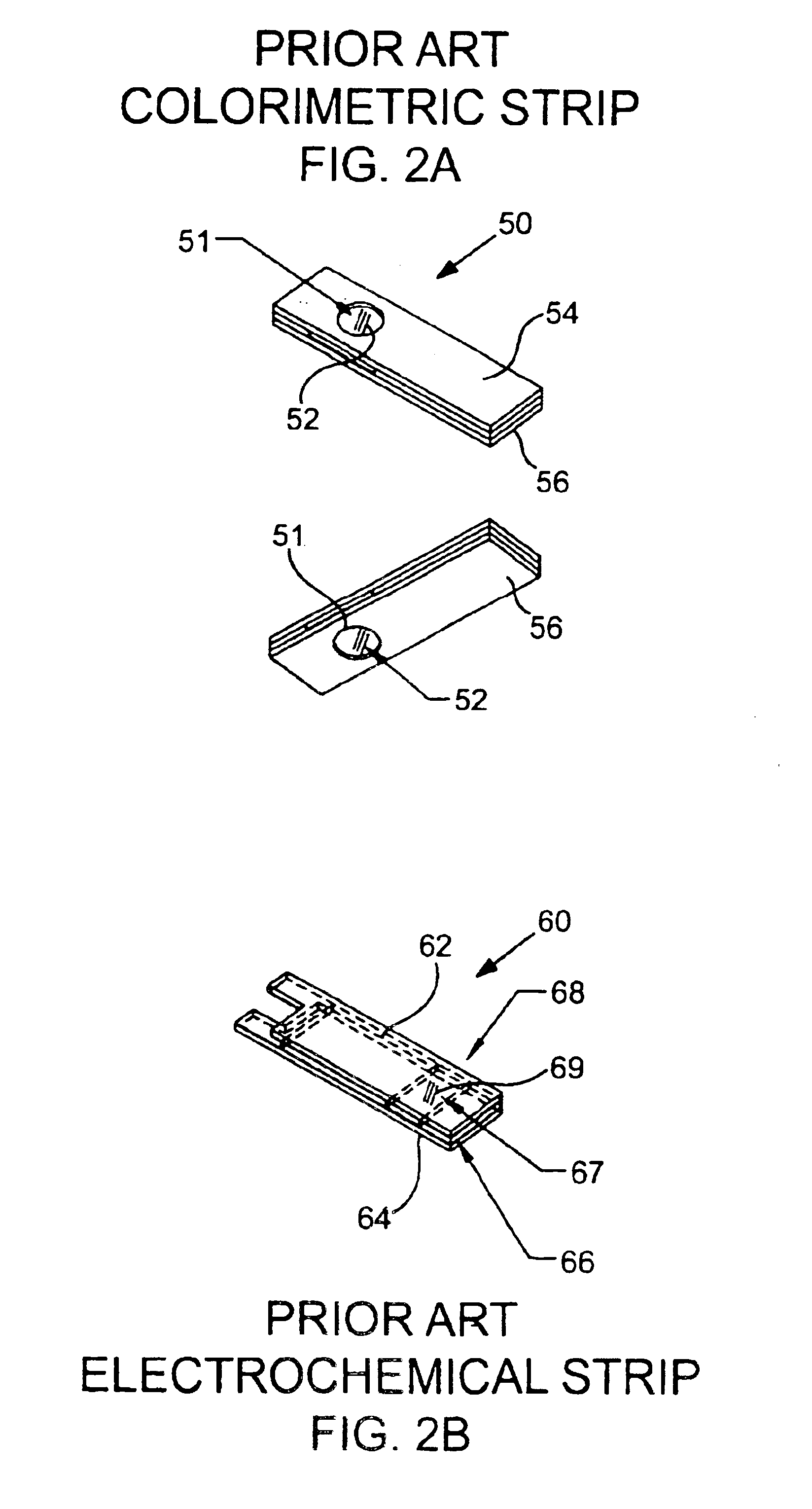Test strip dispenser
a technology of test strips and dispensers, which is applied in the direction of analytical instruments, laboratory glassware, chemical indicators, etc., can solve the problems of contaminated test strips stored inside the vessel, difficult selection of single test strips from a plurality of such test strips, and difficulty in obtaining test strips to begin the procedur
- Summary
- Abstract
- Description
- Claims
- Application Information
AI Technical Summary
Benefits of technology
Problems solved by technology
Method used
Image
Examples
Embodiment Construction
Devices for dispensing test strips and methods of using the same are provided. The subject devices are characterized by having a housing made of a cover and a base configured to retain a plurality of test strips. In certain embodiments, the height of the base is less than the height of each of the test strips, such that a portion of each of the test strips extends beyond the distal or top edge of the base. The subject devices may further be characterized as having a substantially air and moisture tight seal. In using the subject devices, a plurality of test strips stored in a subject device are provided. A single test strip is removed from the subject device by moving the test strip distal to the remaining test strips. Also provided by the subject invention are kits for use in practicing the subject methods.
Before the present invention is described, it is to be understood that this invention is not limited to particular embodiments described, as such may, of course, vary. It is also...
PUM
| Property | Measurement | Unit |
|---|---|---|
| width | aaaaa | aaaaa |
| length | aaaaa | aaaaa |
| diameter | aaaaa | aaaaa |
Abstract
Description
Claims
Application Information
 Login to View More
Login to View More - R&D
- Intellectual Property
- Life Sciences
- Materials
- Tech Scout
- Unparalleled Data Quality
- Higher Quality Content
- 60% Fewer Hallucinations
Browse by: Latest US Patents, China's latest patents, Technical Efficacy Thesaurus, Application Domain, Technology Topic, Popular Technical Reports.
© 2025 PatSnap. All rights reserved.Legal|Privacy policy|Modern Slavery Act Transparency Statement|Sitemap|About US| Contact US: help@patsnap.com



